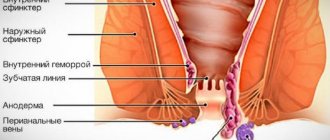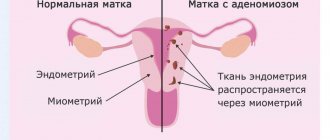Celiac disease - what is this disease?
Celiac disease, or celiac disease, is an immune reaction to eating gluten, a protein found in wheat, barley and rye. This is not a gluten sensitivity or a wheat allergy, as many often think.
In patients with celiac disease, the consumption of gluten triggers an autoimmune process in the body, leading to atrophy of the mucous membrane of the small intestine, impaired absorption of nutrients (malabsorption and lactose intolerance), and in advanced cases, intestinal cancer. Nutrient deficiency can lead to neurological and cognitive impairment, chronic skin inflammation, anemia, infertility, problems with the musculoskeletal system, teeth, coordination of movements, and disability.
There is no cure for celiac disease because it is a genetically determined inability of the body to break down gluten in the small intestine. Exclusion of this product from the diet and a strict lifelong “gluten-free” (gluten-free) diet lead to complete recovery.
Why is celiac disease dangerous in adults?
Celiac disease (celiac disease) is a chronic disease associated with intolerance to the protein component of cereal gluten (gluten), found in large quantities in wheat, rye and barley. The disease is manifested by a negative reaction of the immune system to gluten and, as a consequence, the development of inflammation of the mucous membrane of the small intestine.
Normally, gluten is broken down in the intestines with the help of special enzymes, but some people do not have these enzymes and undigested gluten, acting on the mucous membrane of the small intestine, activates the immune system. As a result, intestinal cells (entererocytes) are destroyed by cells of the immune system (cytotoxic lymphocytes). This leads to disruption of the digestion and absorption of many substances necessary for the body (proteins, fats, carbohydrates, vitamins and minerals).
The main treatment for most patients with celiac disease is a strict gluten-free diet .
Celiac disease in adults is a late development of genetic defects. In childhood, the disease proceeded unnoticed and was not detected. Under the influence of various provoking factors: pregnancy and childbirth, stress, intestinal infections, at the age of 30-40 or 50, many people with congenital gluten intolerance may experience symptoms such as diarrhea, abdominal pain, inability to gain weight, and weight loss.
Difficulties in diagnosing celiac disease in adults
The variety of symptoms of celiac disease: from diarrhea and anemia to irritability and depression, and sometimes asymptomatic progression make early diagnosis difficult, as a result of which 83% of people with celiac disease are not diagnosed in a timely manner.
Without treatment and following a gluten-free diet, people with celiac disease develop complications in other organs and systems, such as diseases of the nervous, bone and endocrine systems, and also increase the risk of cancer.
In approximately 70% of adults, celiac disease occurs under the “masks” of various diseases and pathological conditions:
- anemia resistant to traditional treatment (iron deficiency or associated with deficiency of vitamin B12 and folic acid);
- skin lesions (dermatitis, psoriasis, atopic neurodermatitis);
- diseases of the musculoskeletal system (osteoporosis, muscle atrophy, arthritis, joint pain);
- diseases of the nervous system (peripheral neuropathy, cerebellar ataxia, epilepsy, headaches);
- allergic manifestations (bronchial asthma, food intolerance);
- reproductive dysfunction (female and male infertility, miscarriage).
The significant frequency of atypical and latent forms of celiac disease complicates the timely diagnosis of the disease; often several years pass from the moment patients complain and receive a diagnosis. Therefore, if you have such symptoms, it is important to consult a gastroenterologist with experience in diagnosing and treating this disease.
You can make an appointment at the Expert GC for a consultation with a gastroenterologist specializing in the diagnosis and treatment of celiac disease in adults by calling. 426-33-88.
Lack of public awareness of celiac disease
Despite the fact that celiac disease is a fairly common disease (occurs in approximately 1% of the population), many who suffer from this disease do not even know it. This is due to lack of awareness on the one hand and the presence of atypical, latent and asymptomatic forms of diseases on the other.
In Russia, celiac disease is considered primarily a childhood disease, and we already have a fairly well developed diagnosis of children with this disease. Pediatricians warn young mothers about monitoring the introduction of gluten into food; if problems arise with its tolerance, children are sent for examination to identify celiac disease.
The situation with celiac disease in adults is different; not all therapists and even gastroenterologists yet have enough information about this disease.
Difficulties of following a gluten-free diet
Despite the increase in the number of gluten-free products, it is still difficult to follow a gluten-free diet in Russia, especially for adults with celiac disease.
Firstly , this is due to the lack of a sufficient number of catering places that offer gluten-free labeled dishes.
Secondly , with eating habits that have been formed over a long time and with a lack of understanding of others, especially relatives and friends. Many people, including those with celiac disease and sometimes doctors, do not understand the need for strict adherence to the diet and accept the possibility of breaking the diet on occasion. This diet does not bring results, since consuming even a small amount of gluten (0.06 - 2 g/day) negatively affects the intestinal mucosa. Incomplete adherence to the diet leads to progression of the disease.
Thirdly , the presence in Russia of many products containing hidden gluten, the presence of which is not indicated by the manufacturer when labeling the products. Eating such foods will lead to failure of following a gluten-free diet.
List of foods and food additives that may contain “hidden gluten”:
- meat and fish products (sausage, sausages, canned food, pates, semi-finished products);
- sauces and pastes (ketchup, mustard, mayonnaise, tomato paste, soy sauce, )
- dairy products (ice cream, curd cheese, mass, soft cheese, yoghurt);
- potato chips and corn flakes;
- dry seasonings and spices;
- instant coffee and tea;
- candies, chocolate;
- imitation seafood;
- instant food products (bouillon cubes, soups, mashed potatoes);
- modified starch, some food additives (annatto dye E-160b, caramel colors E-150a - E-150d, maltol E-636, isomaltol E-953, maltitol and maltitol syrup E-965), emulsifiers, stabilizers.
If you have difficulties choosing a diet, a certified nutritionist will help you choose a diet; you can make an appointment by calling 426-33-88.
Complications of celiac disease without treatment
Patients with celiac disease who do not follow a gluten-free diet have a sharply reduced quality of life; they are bothered by chronic fatigue, weakness, and irritability. They have a hard time with changes in life, physical activity, their memory decreases, apathy and indifference predominate, and they may develop depression and insomnia.
Patients with celiac disease are at risk for type 1 diabetes, and they may also have other autoimmune diseases: Sjogren's syndrome, primary biliary cirrhosis, autoimmune thyroiditis, Addison's disease, lymphocytic colitis or gastritis.
The most dangerous complication of celiac disease is cancer of the small intestine; in patients with celiac disease who do not follow a diet, the risk of cancer is significantly increased. To prevent cancer, strict adherence to diet is necessary.
If you strictly follow the diet for 6 months, but there is no improvement, you should consult a gastroenterologist. For 15% of patients with refractory celiac disease, a gluten-free diet is not effective enough and additional treatment with corticosteroids is necessary.
You can make an appointment at the Expert GC for a consultation with a gastroenterologist specializing in the diagnosis and treatment of celiac disease in adults by calling. 426-33-88.
Symptoms of celiac disease
The signs and symptoms of celiac disease differ between children and adults.
Symptoms of celiac disease in adults
The clinical picture in adults is as follows:
- pain and bloating, increased gas formation,
- diarrhea or constipation,
- nausea and vomiting,
- chronic fatigue,
- weight loss.
Adult patients with undiagnosed celiac disease can be treated throughout their lives for dyspepsia, flatulence, and stool disorders. More than half of adult patients with celiac disease experience not only gastroenterological symptoms, but a whole range of problems:
- general weakness, pale skin, mouth ulcers (due to impaired iron absorption);
- joint pain, osteoporosis, osteomalacia (due to impaired calcium absorption);
- itchy skin rash (Dühring's dermatitis herpetiformis);
- headache, numbness of the extremities, tingling in the feet and hands, cognitive impairment, leg cramps (neurological disorders);
- balance and coordination disorders (gluten ataxia);
- decreased spleen function (hyposplenism);
Symptoms of celiac disease in children
Children with celiac disease are more likely than adults to have digestive problems, including the following clinical symptoms:
- nausea and vomiting,
- chronic diarrhea or constipation,
- colic, gas, bloating,
- light-colored stool with a pungent odor.
An acquired inability to absorb nutrients from food can lead to:
- developmental delay (short stature, delayed puberty, etc.);
- rickets, dental growth disorders, caries;
- underweight;
- neurological symptoms, including attention deficit hyperactivity disorder (ADHD), learning disabilities, irritability or depression, headaches, poor coordination, and cramps in the calves and feet.
Consult a gastroenterologist if gastrointestinal problems have been bothering you for more than two weeks. Consult your pediatrician if your child is pale, irritable, stunted, or has problems with bowel movements.
An appointment with a gastroenterologist at the TRADITIONS SPB medical center is carried out daily during the center’s business hours by calling +7 (812) 323‑07‑49
and
+7 (921) 932‑14‑79
, as well as via WhatsApp, Viber, live chat and forms on the website. We are located within walking distance from Vasileostrovskaya metro station. We make house calls to all areas of St. Petersburg and the Leningrad region.
Gluten attacks - health suffers
Typically, celiac disease manifests itself during the first two years of a child's life . This often happens at 4-8 months of age, when mothers decide to feed their babies semolina porridge, milk formula, and give them cookies. Gluten intolerance may also appear later if the introduction of gluten-containing products into the diet is delayed for some reason.
universal symptoms of celiac enteropathy , that is, their severity varies. The clinical picture that is observed in children under two years of age can be called classic. It is as follows:
- increased abdominal circumference;
- decreased appetite;
- chronic diarrhea;
- vomit;
- intestinal dysbiosis;
- behavioral disorders (the child is irritable or, conversely, apathetic);
- growth retardation and/or retardation in physical development;
- thinning or complete absence of the subcutaneous fat layer.
Separately, it should be said about stool with celiac disease . In all respects it is atypical: abundant, liquid, distinctly pale or “multi-colored”, pasty consistency, foaming . Parents describe it more colorfully, saying that it is like eggplant caviar, sometimes reminiscent of rising dough or soap suds. The degree of abundance can be judged by the fact that the pot instantly fills to the brim. undigested food remains are found in the stool , which makes it resemble vomit. In some young patients, it has an “unpredictable” consistency, being mushy, liquid, or even formed. But in all cases its excessive abundance is noted.
In some cases, symptoms are less pronounced or completely absent. This is possible if the disease is detected in children over two years of age. These forms of celiac disease are called atypical. The difference from “classic” glutenenteropathy is that non-intestinal symptoms predominate. For example, an incomprehensible growth retardation or anemia that has arisen for no apparent reason. In patients, tooth enamel may be affected.
Causes of celiac disease
Celiac disease is inherited (90% of patients with celiac disease are carriers of the HLA-DQ2 gene, another 10% - the HLA-DQ8 gene) and is accompanied by some other diseases. You are at risk if one of your blood relatives suffers from:
- celiac disease or dermatitis herpetiformis;
- diabetes mellitus type 1;
- Down syndrome or Turner syndrome;
- autoimmune thyroiditis;
- microscopic colitis (lymphocytic or collagenous colitis);
- Addison's disease.
Even if you have a set of genes that predispose you to celiac disease and you consume foods with gluten, the disease does not necessarily manifest itself immediately. Genes can “wake up” under the influence of the following factors:
- pregnancy, childbirth, breastfeeding,
- bacteria and viruses,
- operations,
- strong emotional shocks.
Endoscopic examination and related manipulations
Fibrogastroduodenoscopy is the main method for diagnosing celiac disease. This test involves inserting a probe into the duodenum through the mouth and esophagus. Penetrating into the duodenum through the stomach, the probe shows the internal state of these organs through a video camera attached to the end. The whole picture goes on the monitor screen.
Fecal analysis - feces are examined to determine the degree of digestibility of food.
In this case, a sample of the mucous membrane is taken, which is subsequently examined under a microscope. For a more detailed examination, it is stained with special reagents. The purpose of microscopy is to analyze the structure and size of the intestinal villi. If a person has celiac disease, they will be smaller in size than normal, and the number of glandular cells will also not correspond to the usual numbers. The villi may be atrophied. Such degenerative changes in the intestinal villi are the most dangerous consequence of gluten intolerance.
Diagnosis of celiac disease
Important!
If you stop eating gluten-containing foods or even reduce the amount of gluten in your diet before testing, this will affect the test results. Take tests only under the supervision of a doctor!
Tests for celiac disease
The diagnosis of developed celiac disease and gluten ataxia is based on immunological tests, which determine the amount of specific antibodies:
- antibodies to tissue transglutaminase,
- antibodies to gliadin,
- antibodies to endomysium and reticulin.
Differential diagnosis
To differentiate from allergies
The doctor may prescribe the determination of specific IgE antibodies to wheat and gluten.
Gluten ataxia
- damage to the nervous system by gluten - can occur as an independent disease and is not necessarily accompanied by celiac disease, i.e. damage to the small intestine. Among patients with celiac disease, gluten ataxia occurs in approximately 4% of cases. In both cases, a gastroenterologist will refer you for a consultation with a neurologist.
In recent years, foreign classifications have begun to identify non-celiac gluten sensitivity
, which is often confused with a gluten allergy. It occurs in the population up to 20 times more often than celiac disease. Gluten hypersensitivity does not progress and does not lead to complications. A hypersensitive person is able to eat thousands of times more gluten (before negative symptoms appear) than a patient with celiac disease. The diagnosis is made based on clinical signs to the exclusion of other pathologies.
Additional tests
As already mentioned, the antibodies produced in patients with celiac disease in response to gluten damage the intestinal villi. The villi should be able to absorb vitamins, minerals and other nutrients from food, but they cannot. As a result, you do not get enough iron, potassium, sodium, calcium, and vitamin D from food, no matter how much you eat. In addition, increasing damage to the rectal epithelium sometimes leads to lactose intolerance and even cancer.
For celiac disease, a gastroenterologist may additionally prescribe the following types of tests:
- general blood analysis;
- total protein test;
- albumin test;
- electrolyte analysis;
- measuring calcium levels;
- iron test;
- alkaline phosphatase test;
- coprogram;
- FGDS (fibrogastroduodenoscopy);
- biopsy of a section of the intestinal mucosa.
Prevention
There is no primary prevention for celiac disease. Secondary prevention comes down to diet and annual examination by a gastroenterologist. Pregnancy management in those suffering from this disease should be carried out with increased attention, since this pathology increases the risk of developing heart defects in the fetus.
Due to the variety of symptoms, diagnosis of celiac disease can only be carried out by qualified specialists using the latest techniques. The medical specialist has everything necessary to conduct a comprehensive examination of the patient’s body. You can make an appointment with a gastroenterologist at any time by phone or through the form on the website.
Sources:
- Bai J. WGO-OMGE / J. Bai, E. Zeballos, M. Fried // Practice Guideline Celiac Disease. - 2005. - Vol. 10. - P. 1-8.
- Belmer S.V. Celiac disease: from pathogenesis to treatment / S.V. Bellmer, T.V. Gasilina // Issues of modern pediatrics. - 2013. - T. 12. - No. 3. - P. 12-17.
- Kamalova A.A. Evolution of approaches to the diagnosis and treatment of celiac disease / A.A. Kamalova, M.O. Pirogova // Bulletin of modern clinical medicine. - 2013. - T.6. — Vol. 3. - pp. 40-48.
- Mikhalik D.S. Celiac disease: disease and lifestyle / D.S. Mikhalik [and others] // Zemsky doctor. - 2012. - No. 4. - P. 35-38.
- Roslavtseva E.A. Celiac disease: unresolved problems of pathogenesis, diagnosis and treatment / E.A. Roslavtseva [and others] // Issues of modern pediatrics. - 2005. - T. 4. - No. 6. - P. 48-57.
Treatment of celiac disease with diet
Some patients complain that a special diet does not help them. The lack of positive dynamics in the treatment of celiac disease with diet is often associated with errors in menu planning. This is why it is so important not to self-medicate, but to consult a nutritionist.
With a gluten-free diet, not only cereals, pasta, flour, and baked goods with gluten are excluded, but also products containing the so-called. “hidden gluten” (gluten). Because of gluten's ability to thicken and stick together, gluten is added, for example, to yoghurts, ice cream, oatmeal, some medicines and cosmetics.
If in this case the symptoms do not go away, further examinations will be needed. Associated health problems may prevent remission from occurring:
- Bacteria in the small intestine (bacterial overgrowth);
- Microscopic colitis;
- Pancreatic insufficiency;
- Irritable bowel syndrome;
- Impaired digestion of sugar found in dairy products (lactose), table sugar (sucrose) or sugar found in honey and fruits (fructose).
Refractory celiac disease
In rare cases, intestinal damage really cannot be corrected even with a strict, well-designed gluten-free diet. This condition is known as refractory celiac disease
. If you do not improve within the first 6-12 months after switching to a gluten-free diet, you will need to undergo further testing.
Telephone numbers of the TRADITIONS medical center:
+7 (812) 323‑07‑49 and +7 (921) 932‑14‑79
Opening hours: Mon-Fri 9.00 - 21.00; Sat-Sun 10.00 – 18.00
Your health is in the hands of professionals!
Kreimer Vadim Dmitrievich
- Doctor of Medical Sciences, Head of the Clinic of Gastroenterology and Digestion, gastroenterologist, endoscopist.
- Professor of the European Association of Gastrointestinal Endoscopy.
- He is the author and co-author of more than 100 scientific works, including 3 monographs.
- For services in the field of medicine, he was awarded the Order of “LABORE ET SCIENTIA” (labor and knowledge) of the European Scientific and Industrial Consortium.
FAQ
| Basic information about celiac disease: |
|
| Diagnostics: |
|
| Treatment: |
|
| Current issues: |
|
| Living with Celiac Disease: |
|








